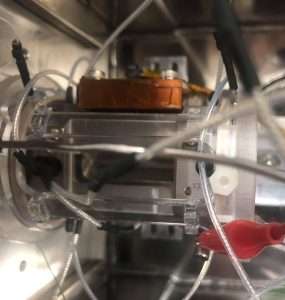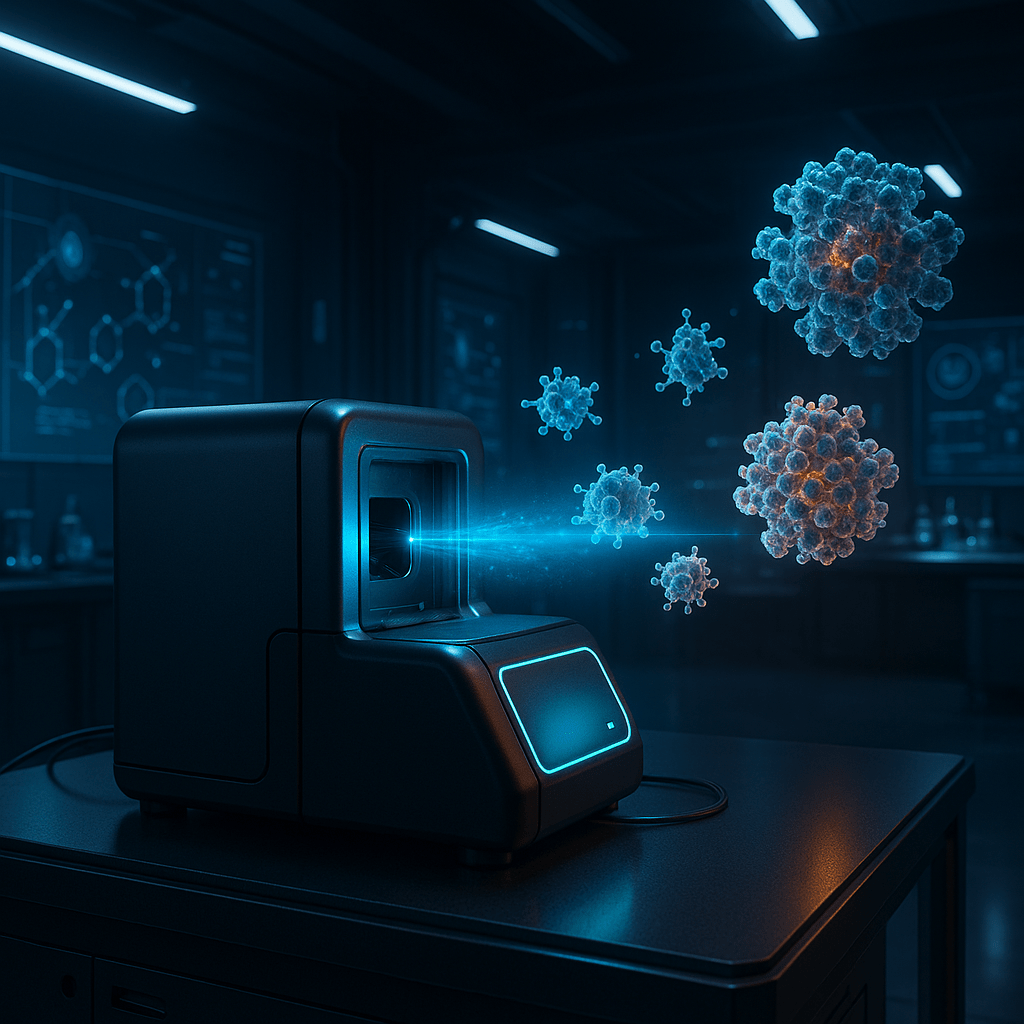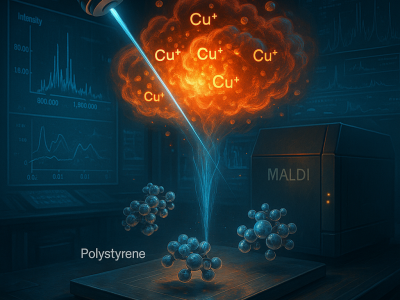As medical science hurtles into the era of personalised treatments and large-scale proteomics, a longstanding bottleneck has been the precise analysis of extremely high-mass biomolecules. Now, a new development from National Dong Hwa University in Taiwan offers hope.
Research led by Dr. Avinash A. Patil at National Dong Hwa University has unveiled a linear ion trap mass spectrometer (LIT-MS) capable of analysing matrix-assisted laser desorption/ionisation (MALDI) ions with masses approaching a million Daltons. That’s right—ions with masses comparable to viruses or enormous protein complexes.
Let’s unpack what that means, why it matters, and how this could signal a leap forward in medicine, materials science, and beyond.
Understanding the mass spectrometry ceiling
Mass spectrometry is the cornerstone of modern molecular analysis. From detecting doping in athletes to tracing pollutants in oceans, its applications are vast. But until recently, there’s been a catch: conventional mass spectrometers struggle to analyse molecules above a few hundred kilodaltons. For megadalton-range molecules like immunoglobulin M (IgM), alpha-2-macroglobulin, and certain synthetic polymers, current tools are limited in sensitivity and accuracy.
Traditional linear ion traps, while cost-effective and compact, have struggled to break into this high-mass domain due to limitations in ion capacity and detection techniques. The LIT-MS instruments on the market typically use a fixed radiofrequency (rf) voltage with voltage-scan methods, restricting mass-to-charge ratio (m/z) detection to just a few thousand Daltons.
The new research, however, makes a bold stride past these constraints.
How the new system works
The heart of the innovation lies in two advances. First, the team replaced the conventional voltage-scanning method with a frequency-scanning radiofrequency (rf) mode. This adjustment enables the efficient trapping and analysis of ions with a broader and higher mass-to-charge (m/z) range. In addition, they implemented a resonance ejection technique using dipolar excitation, which gently and selectively ejects high-mass ions from the ion trap. Together, these improvements significantly extended the LIT-MS detection range—reaching up to one million Th (Thomson units).
Second, they replaced conventional detectors with a highly sensitive charge-sensing particle detector (CSPD). Unlike older systems, this detector doesn’t rely on creating secondary electrons, a process that becomes increasingly inefficient as ion mass increases. The CSPD detects the actual charge of each ion, enabling analysis at far lower concentrations.
In practice, they successfully detected a range of high-mass ions, including:
- Thyroglobulin (~660 kDa)
- Alpha-2-macroglobulin (~725 kDa)
- IgG and IgM antibodies (up to ~970 kDa)
- Synthetic polymer ions close to 940 kDa
More impressively, using carboxylated/oxidised detonation nanodiamonds (oxDNDs), they enriched low-concentration IgM samples to just 5 nM, well below the thresholds required by other techniques.
Why this matters for healthcare and bioscience
In healthcare, especially immunotherapy and vaccine development, it’s crucial to accurately characterise the structure and quantity of large biomolecules. Immunoglobulins, particularly IgM, are early responders in the immune system. Their detection could improve diagnosis of autoimmune diseases or viral infections.
Moreover, detailed analysis of megadalton proteins helps in understanding protein aggregation, an underlying feature in neurodegenerative disorders like Alzheimer’s and Parkinson’s disease.
Then there’s the therapeutic protein market, which is forecast to surpass $500 billion globally by 2030. As more biologics enter the pipeline, precise and scalable methods for verifying protein integrity, glycosylation states, and aggregation profiles will be essential.
This instrument could also be a boon in identifying contaminants or tracking macromolecular degradation in biologics, important for both regulators and pharmaceutical firms.
Beyond biology: Polymers, nanoparticles, and industrial chemistry
Outside medicine, this mass spectrometer offers major benefits in materials science. Synthetic polymers, nanomaterials, and supramolecular assemblies often have molecular weights exceeding 500 kDa. With the LIT-MS, these can now be monitored with high resolution and minimal sample prep.
Polymers in consumer products, ranging from plastics to paints, can now be better analysed for purity and degradation. In environmental chemistry, detecting trace levels of plastic-derived macromolecules could guide policies around microplastics.

A timely innovation in the era of pandemics
If there’s one thing the COVID-19 pandemic has underscored, it’s the need for fast, sensitive, and scalable diagnostics. While PCR remains a gold standard, mass spectrometry can offer complementary insights, especially when detecting large viral particles, viral envelope proteins, or immune complexes.
By making LIT-MS capable of megadalton ion analysis at nanomolar concentrations, the new development opens the door to diagnostic tools that can work with minimal sample sizes and deliver rapid results.
Given the growing risk of zoonotic diseases and antimicrobial resistance, this innovation is timely and necessary.
The price factor: Mass spectrometry democratised
One of the lesser-discussed barriers in advanced diagnostics and molecular research is cost. High-resolution TOF-MS or Orbitrap systems capable of megadalton analysis are extremely expensive and bulky. They also require complex calibration and maintenance.
This new LIT-MS, on the other hand, uses relatively low-cost components and could be retrofitted into existing mass spectrometry workflows. By lowering the entry barrier, the technology could see adoption in smaller research labs, hospitals, and even field settings.
This democratisation of high-mass analysis is no small feat. It could decentralise advanced molecular testing and foster innovation in countries and institutions where capital investment is limited.
Our goal was to make high-mass biomolecular analysis more accessible without compromising sensitivity. By combining frequency scanning resonance ejection with a charge-sensitive detector, we’ve opened new possibilities for studying viruses, antibodies, and polymers, even in low-resource settings.
— Dr. Avinash A. Patil, National Dong Hwa University, Taiwan
Limitations and future directions
Despite its promise, the system has some limitations. While the CSPD is sensitive, its dynamic range for detecting simultaneously occurring ions is lower than some commercial detectors. The system also needs further validation across complex biological matrices like blood serum or cell lysates.
Moreover, coupling the technique with liquid chromatography remains a challenge. The current study focused on MALDI ions, which require different sample preparation protocols than electrospray ionisation (ESI), the most common method used in proteomics.
Still, the team’s plan to integrate microfluidics and automated data analysis into future versions is encouraging. There’s also interest in using the system for structural analysis of macromolecular complexes via top-down proteomics.
What does this mean for global research?
This advance is not just a technical upgrade, it’s a statement. It reflects the global shift towards accessible, high-performance instrumentation. As more researchers worldwide join the scientific community, especially from low- and middle-income countries, tools like this will be key in levelling the playing field.
From infectious disease tracking in rural clinics to agricultural biotech labs monitoring plant proteins, the LIT-MS could serve in unexpected but vital corners of science.
Its adaptability to polymers, proteins, and even virus-like particles makes it a Swiss army knife for 21st-century research.
Final thoughts
We live in a world where science increasingly informs politics, public health, and personal well-being. Yet, tools to understand the fundamental building blocks of biology often remain locked in elite labs.
The development of this LIT-MS system feels like a quiet revolution. It’s the kind of incremental yet powerful innovation that rarely makes headlines, but underpins breakthroughs in drug development, diagnostics, and materials science.
It raises an exciting question: if analysing megadalton molecules becomes routine, what other biological mysteries are we poised to solve?
Reference
Patil, A. A., Liu, Z. X., Chiu, Y. P., Lại, T. K. L., Chou, S. W., Cheng, C. Y., … & Peng, W. P. (2023). Development of a linear ion trap mass spectrometer capable of analyzing megadalton MALDI ions. Talanta, 259, 124555. https://doi.org/10.1016/j.talanta.2023.124555







